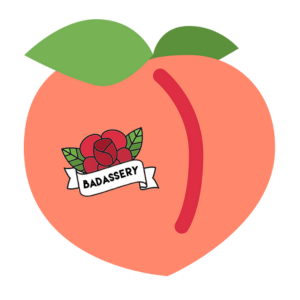To All the Women That Came Before
By Badassery member Taylor Hosking, former Staff Writer at VICE Media, analyzer of social justice issues, producer of podcasts, and storyteller through her Instagram stories.
I come from a long line of Black women who were essentially culture journalists, even though they never took on the official title. Growing up, my mother was really passionate about making sure I knew all the breakdancing pioneers who came from our slice of Manhattan’s Upper West Side. She told vivid stories about the hip hop history and street culture she grew up in with the enthusiasm and skill of a professional podcast host.
But she was just operating in the tradition of Black women passing down their oral histories when they can’t rely on popular media to feel seen. She shared those skills with the other women in my family—my aunt and grandmother—but as an only child raised by a single mother who loved to reminisce I felt like I got a front-row seat to the movie-version of her childhood. She would jump into a moment and paint the whole scene with sound effects, spontaneous dance numbers, and impersonations of herself as a kid, all before tying it into her own commentary on the point of the story. And since we both grew up in the same apartment building, her stories were also a window into the scrappier days that I only caught the tail end of, when kids met their friends, romances and potential enemies in the school park.
Nowadays I get paid to tell stories about the way cultural movements change over time—and my mother’s shared memories have become a map. I came to realize that her preoccupation with our neighborhood’s breakdancers, for example, wasn’t just the usual childhood reminiscing. Groups in our neighborhood like the Rock Steady Crew were really at the forefront of teaching young people throughout the city how to breakdance despite popular media usually focusing on other neighborhoods in the Bronx and Brooklyn when retelling the genre’s origin. Even now as I write this story, I’m seeing a new meaning in one of her memories of cheering for kids who were flinging themselves from a swing set onto a nearby fence while striking a pose. That story might not be about hip-hop explicitly, but it’s about the acrobatic performative culture that birthed a movement with so much energy and flair that it could take over the world.
Once I became a culture staff writer at VICE, my family’s stories provided the inspiration for some of my favorite, and most unique articles. For example, one day I was writing a news story about Steven Speilberg’s remake of West Side Story which is trying to avoid whitewashing the movie’s Latinx characters. I remembered that my family actually knows a few old-school Puerto Rican biker gangs from the Upper West Side, where the movie is based. So I got the contact information of the Godfather of one of those old-school groups, Chino La Familia of the West Side La Familia. Instead of simply covering the news that Speilberg’s movie was hoping to present Latinx characters more authentically, I included an interview with Chino about his opinion of the way Puerto Rican characters were depicted in the original West Side Story (one of my favorite interviews to date!).
Some of my journalism doubles as a personal journey to piece together fragments of my family’s memories and marry them with rigorous reporting to tell a new, complete story. But becoming a culture journalist also gave me the tools to finish my own stories as well.
Sometimes that looks like turning a personal reflection about crossdressing on Halloween into a story about the century-old tradition of queer people pushing boundaries on Halloween. Other times I’ve been able to use a genuine experience, like my surprise at seeing an important hip-hop photo for the first time, to launch a reflective investigation into why certain early hip-hop photos have become more famous than others.
Culture journalism, for me, is about more than covering the latest project releases or interviewing celebrities about their opinions on social issues. It’s a way of documenting key under-acknowledged moments in Black history and queer history that helped shape our world. It takes a village to contribute all the necessary hints and off-hand remarks that could lead to an untold story. But lucky for me, Black women have become excellent oral historians, preparing for a day when new generations can finally immortalize their voices.
Check out more about Taylor on her Badassery page and follow her on LinkedIn, Instagram and Twitter. We encourage you to also share your personal stories using the #RedefiningBadassery hashtag!


